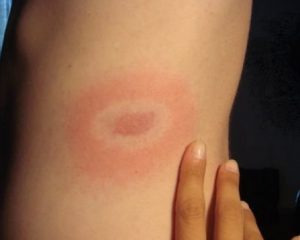There are a lot of innovations that may no longer shock you right now. Given the tech advancements that we are now enjoying, it is no longer surprising to see people come up with really cool discoveries that can improve our lives one way or the other. As the days and years pass by, we are seeing more innovations that continue to mimic human life and the electronic skin is just one of those things that proves a lot of things are possible with the right technology on hand. Artificial intelligence is already here, although not as widespread as our ancestors have predicted, but if you look at computer and smartphone assistants like Apple’s Siri and Amazon’s Alexa, you’ll realize AI is our present and future.
 One of AI’s main goals is to enhance robotics. In order to do so, advances like the electronic will give us with more realistically-looking robots like the ones we see in movies. They don’t have to look bulky and awkward but rather natural and easy on the eye. The e-skin is a recyclable adhesive and is capable of doing a lot of things like what a real skin does. It can detect the temperature, air flow, and even air humidity. Robots with the e-skin can experience sensations that an average human feels making human and robot interaction more genuine in the future.
One of AI’s main goals is to enhance robotics. In order to do so, advances like the electronic will give us with more realistically-looking robots like the ones we see in movies. They don’t have to look bulky and awkward but rather natural and easy on the eye. The e-skin is a recyclable adhesive and is capable of doing a lot of things like what a real skin does. It can detect the temperature, air flow, and even air humidity. Robots with the e-skin can experience sensations that an average human feels making human and robot interaction more genuine in the future.
Technology that mimics the functions and sensations of human skin may sound futuristic, but it isn’t exactly new. In 2010, scientists at Stanford University and at University of California, Berkeley, developed artificial skin that could feel even a gentle touch. Dubbed e-skin, the device holds great potential to help future robots more delicately interact with humans.
But now, researchers at the University of Colorado Boulder are giving e-skin an environmentally friendly upgrade. As Adam Epstein writes for Quartz, the latest iteration of the device can re-heal itself and be recycled to make new layers of skin.
(Via: https://www.smithsonianmag.com/smart-news/electronic-skin-self-healing-and-reusable-180968174/)
What’s even more amazing is that this e-skin can regenerate itself similar to that of a real skin that grows new layers after several days or so. While it greatly mimics a real human skin, it is not vulnerable to common human issues like skin conditions such as skin tags and other skin growths that all humans have to deal with at one point or another. Some may even think that robots have it better than humans as they can enjoy the perks that the skin can offer minus the discomforts and frustrations of various skin flaws we often complain about.
Electronic skins might not only detect health troubles in the near future, but display them for the world to see. University of Tokyo researchers have developed an e-skin that can measure vital signs like your heartbeat and display them in real time on a skin display. The design blends a breathable nanomesh electrode and stretchable wiring with an array of micro LEDs that can output basic images bending with your body. Others know right away if you need help — they’d just have to look at your hand (or anywhere else the sensor works) to get an idea of what’s wrong. The sensor can pair with a smartphone and transmit its info to the cloud, too.
There have been stretchable displays before, but they typically fall apart quickly after exposure to air and the usual stretching and twisting of your skin. The sensor itself lasts for about a week without inflammation, too, and was built using conventional circuit board manufacturing techniques that should keep the cost down.
(Via: https://www.engadget.com/2018/02/18/electronic-skin-can-display-a-heartbeat-on-your-hand/)
The e-skin also proves to be such a blessing in the medical field as its ability to detect cardinal signs like your heartbeat that they can easily view through a skin display. It is not rocket science but it can come in handy in many instances especially now that technology is widely used and almost all aspects of human lives are affected. It is extremely helpful in emergency cases where others can already see this vital information just by glancing at your hand. And with smart technology and the Internet of Things, you can share and save these data even up in the cloud to help healthcare providers understand your overall health with ease. E-skin today who knows what new discovery we’ll hear about in the future but definitely there are bigger things in store for us if we put technology to good use.









